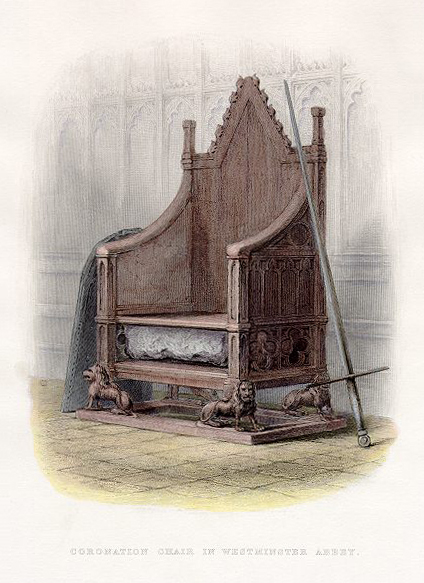In 1296, King Edward I, who earned himself the nicknames, ‘Hammer of the Scots’ and ‘Longshanks’, deposed Scottish King John Balliol and brought the ‘Stone of Scone’ from Scotland to London where it was given pride of place under a specially made Coronation Chair in Westminster Abbey.

It stayed in Westminster Abbey for over 650 years until Christmas Day 1950, when it vanished.
The Stone of Scone, or the Stone of Destiny, is an ancient symbol of Scottish monarchy. It was used during the coronation of Scottish kings for hundreds of years. Edward’s theft of the Stone from Scone Abbey was an obvious attempt at undermining the authority of the Scottish monarchs and a demonstration of his power over Scotland.
Since then, it has been used during the coronation of the kings and queens of England and later (after 1707) Great Britain.

However, on Christmas Day 1950, four Scottish students stole the Stone from Westminster Abbey and transported it back to Scotland. They broke into Westminster Abbey in the early hours of Christmas Day and worked the stone loose from under the coronation chair, breaking a little from one corner as they did so. They wrapped it in a Macintosh and dragged it across the floor before spiriting it away to Glasgow. It was then repaired before being placed at Arbroath Abbey on 11 April 1951.
It was later returned to London. In November 1996, 700 years after it was taken, it was returned to Scotland. After spending the evening before St Andrew’s Day (30 November) at Holyrood House, it was taken to Edinburgh Castle, where it is displayed by the crown jewels and will only return to England for the coronation of the next sovereign.
Source:
https://www.royal.uk/history-royal-christmases
https://www.edinburghcastle.scot/discover/highlights/the-stone-of-destiny


How interesting history is!
LikeLiked by 1 person
I never heard that story before. Thank you for sharing
LikeLiked by 1 person
Did the students ever get prosecuted?
LikeLiked by 1 person
I read three sources and only one mentioned that no action was taken. The others didn’t say anything.
LikeLiked by 1 person
Maybe it should stay in Scotland during the next British coronation?
LikeLiked by 1 person
It’s part of 700 years of tradition now, I think they have a deal! To be honest, it certainly wouldn’t bother me if it stayed in Scotland 🙂
LikeLiked by 1 person
How can a stone be so important?
LikeLiked by 1 person
Well, it does seem odd to modern eyes. I tend to look at it through the lens of Arthurian legend and prior to Edward I taking the stone, it represented hundreds of years of Scottish sovereignty.
LikeLiked by 1 person
Undeniably. It’s just interesting how we choose the weirdest things to mean so much to us.
LikeLike
Congratulations… I have included your blog/s in INTERESTING BLOGS in FRIDAY FOSSICKING at
https://thatmomentintime-crissouli.blogspot.com/2018/12/friday-fossicking-21st-dec-2018.html
Thank you, Chris
LikeLiked by 1 person